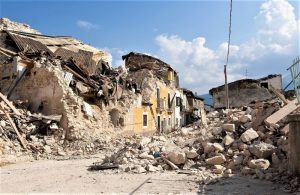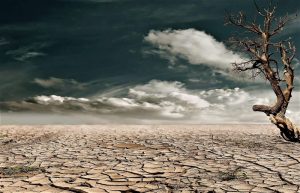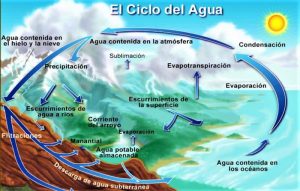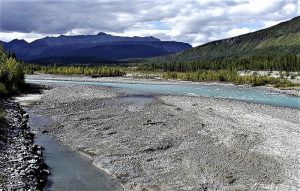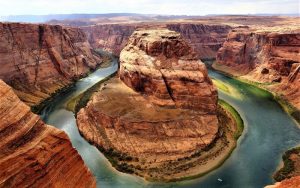Earthquake
An earthquake is any sudden shaking of the ground caused by the passage of seismic waves through the rocks of the Earth. Seismic waves occur when some form of energy stored in the earth's crust is suddenly released, usually when rock masses suddenly contract and fracture. Earthquakes occur most frequently along geological faults, narrow areas where rock masses move with each other. The world's major faults are located on the fringes of the huge tectonic plates that form the earth's crust. The science that studies earthquakes is known as seismology. The term earthquake is closely related to earth movements.
What is an earthquake?
It is a sudden movement of the earth caused by the release of energy accumulated over a period of time on the tectonic plates, which are arranged to shape the surface of the planet.
Characteristics of an earthquake
The main characteristics of an earthquake are the following:
- They are sudden movements of earth that happen in the internal layer of the earth.
- They happen naturally and spontaneously.
- They are caused by the collision of the tectonic plates.
- They move by means of vibrations that travel through the earth’s crust.
- Can be measured by means of scales.
- Depending on their intensity, earthquakes are capable of causing great destruction and death.
- They have no mechanism to predict them.
History
The history of earthquakes until the seventeenth century was scarce because there was no understanding of the process that originated them. Many thought that they were due to divine punishments for man’s bad behavior. The first referenced earthquake occurred in China in 1777 B.C. In Europe, the first known earthquake occurred in 580 B.C. From this century, it was that they began to find stories about earthquakes.
Types of earthquakes
There are three different types of earthquakes classified according to the depth of the focus of the energy release, in this way we have:
- Superficial: their focus does not go beyond 70 kilometers of depth; they are the ones that cause greater damages because their impact with the terrestrial surface is greater. The hypocenter in these earthquakes is located between 10 and 25 kilometers deep.
- Intermediate: the focus occurs at a depth of between 70 and 300 kilometers deep.
- Deep: they have their focus outside the limits of the lithosphere, that is to say to more than 300 kilometers of depth and they are imperceptible by people.
Measurement
The measurement of earthquakes is done through a device called seismograph, which has the function of measuring the vibration produced by the earth when tectonic plates collide. This instrument gives us the magnitude and duration of the earthquake and records the surface waves that travel on the surface of the earth and the central waves that travel through the earth from the depth of it.
Intensity
Intensity is measured by the Richter scale and measures the amount of energy released by a tremor or earthquake. It was developed by Charles F. Richter and is also useful for predicting tsunami formation. It can also be measured by means of the Mercalli scale which measures damage and not intensity.
Magnitude of an earthquake
The magnitude of an earthquake represents the seismic energy that is released when an earthquake occurs. It is measured by a scale that grows in power and each point of increase means a greater amount of energy. This scale is called Richter and tells us then that:
- Less than 3.5: not felt, but recorded
- 5 – 5.4: it feels, but only causes minor damage.
- 5 – 6.0: may cause slight damage to buildings.
- 1 – 6.9: may cause severe damage in densely populated areas.
- 0 – 7.9: This is a major earthquake that has the force to cause severe damage.
- 8 or greater: it is considered a great earthquake and by its force produces total destruction to nearby communities.
Earthquakes can also be measured with Mercalli scale and this is expressed by means of Roman numerals, where the intensity XII is the highest and in which there is total destruction of settlements or land, seas and rivers.
Causes
The causes that produce an earthquake are the landslides of the tectonic plates that overlap or collide, and this is known by the name of fault. When the plates collide, they produce an energy release or seismic waves that produce an abrupt reorganization of the materials of the earth’s crust.
Consequences
Earthquakes have major consequences on land and people. They cause physical and structural damage that is difficult to solve. The loss of human life, the economic impact and social and emotional devastation that can result from earthquakes make them first in natural disasters. In addition to this, they have the capacity to produce tsunamis, huge waves that affect the coasts, causing the loss of human lives and commercial activities.
How to prevent an earthquake
To date, there is no method for determining when an earthquake is going to occur because they occur spontaneously without any prior warning. It is known through the study of movements and plates, which are the places most susceptible to earthquakes and for this reason, plans and systems of earthquake prevention are developed. One of the methods that has been used lately is the SCIGN system that monitors the movement of the tectonic plates by means of GPS. The best thing is to establish emergency plans and constructions based on anti-seismic systems to avoid possible catastrophes.
How earthquakes spread?
Earthquakes are propagated through seismic waves that are produced by the friction of the tectonic plates which can produce from a small shock to a catastrophe. The point at which an earthquake originates is called the focus and the epicenter is the point that is located more towards the earth’s surface.
Examples
The most intense earthquake that has hit the earth happened in Chile on May 22, 1960, had a magnitude of 9.5 on the Richter scale and was perceived by the entire southern cone of America. 1,655 people died, 3,000 were injured and 2,000,000 people were left homeless. In addition, it caused a tsunami that caused extensive damage in Hawaii, Japan, the Philippines and the United States.
Another major earthquake was in Alaska on 27 March 1964. It lasted an enormous 4 minutes and produced a tsunami with waves of up to 5 meters. It produced changes in the soil and caused the sand to become liquid.
In 2004, there was a major earthquake in Indonesia with a magnitude of 9.1 Richter. Thousands of people died and countries such as Africa and South Asia were affected. It lasted 10 minutes and is one of the longest in history, so much so that it managed to make the entire planet vibrate an inch.
How to cite this article?
Briceño V., Gabriela. (2019). Earthquake. Recovered on 23 February, 2024, de Euston96: https://www.euston96.com/en/earthquake/
